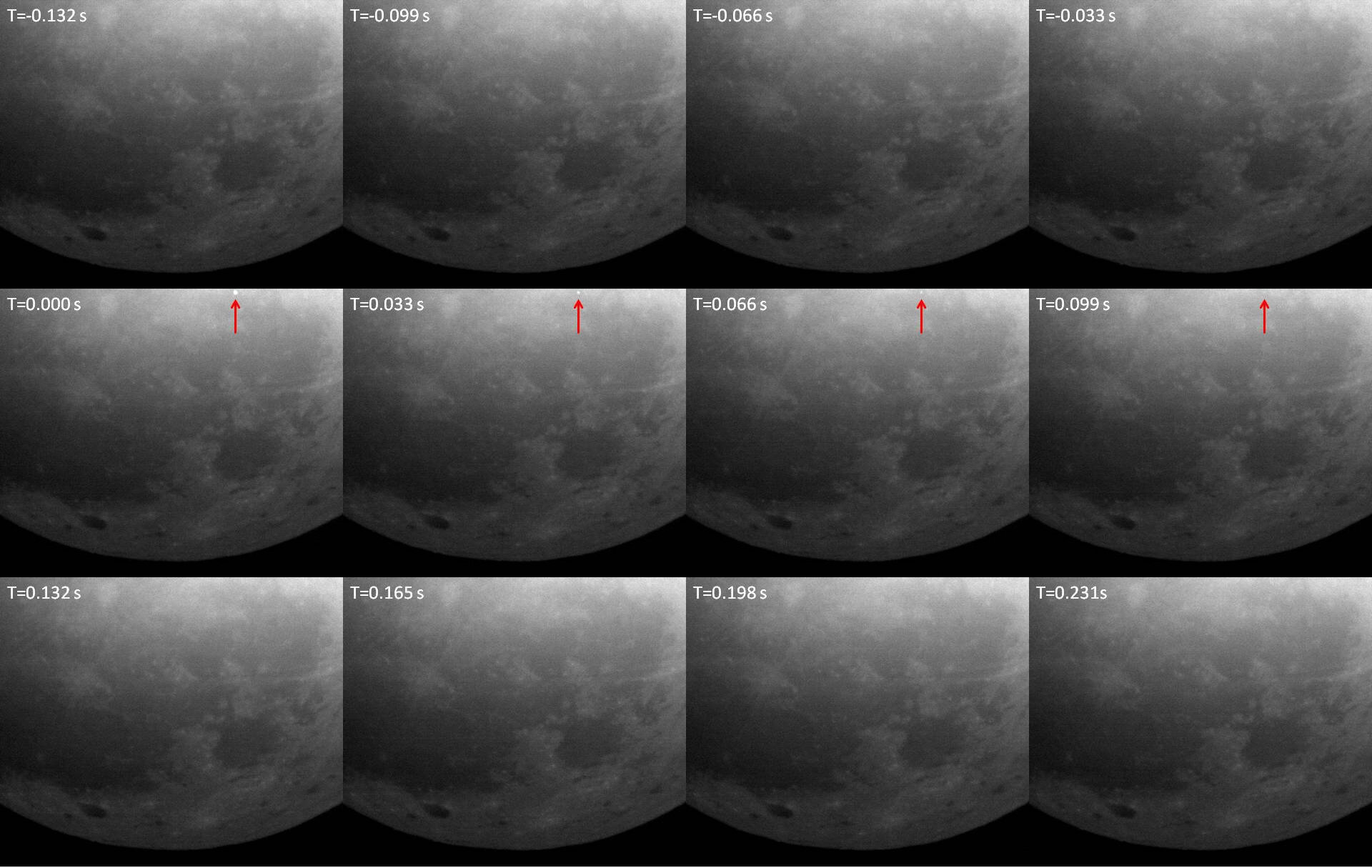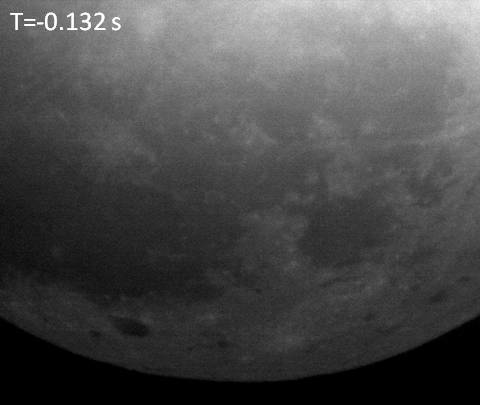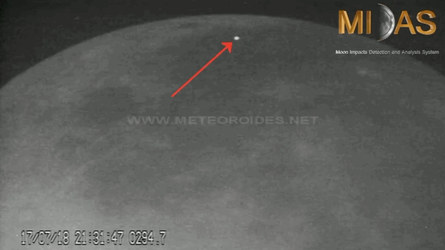

Agency
Lunar impact flash
Since March 2017, the NELIOTA project has been monitoring the dark side of the Moon for flashes of light caused by tiny pieces of rock striking the Moon's surface.
This sequence of 12 consecutive frames shows a bright flash detected on 4 frames during observations on 1 March 2017. The red arrows point to the location of the impact flash, near the edge of the frame.
NELIOTA uses a 1.2 m telescope operated by the National Observatory of Athens and located near the Greek town of Kryoneri. Two advanced digital cameras are used to record the data at a rate of 30 frames per second. Since each camera operates in a different colour range, the temperature of the flashes can be estimated. NELIOTA is the first such system to have this capability.





